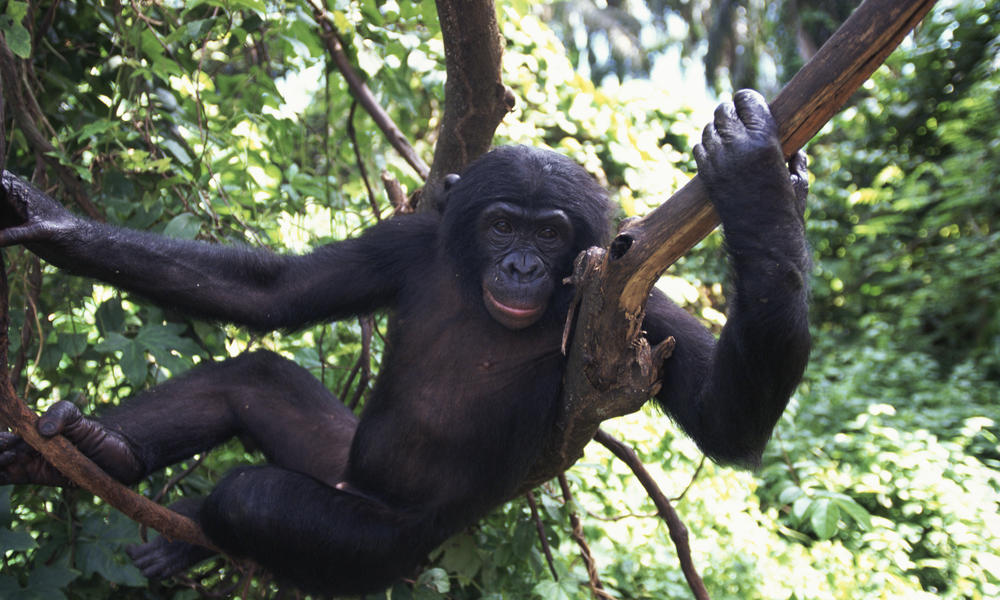Bonobo
The bonobo (/bno?bo?/ or /?b?n?bo?/), Pan paniscus, previously called the pygmy chimpanzee and less often, the dwarf or gracile chimpanzee, is a great ape and one of the two species making up the genus Pan; the other is Pan troglodytes, or the common chimpanzee. Although the name "chimpanzee" is sometimes used to refer to both species together, it is usually understood as referring to the common chimpanzee, while Pan paniscus is usually referred to as the bonobo. It is distinguished by relatively long legs, pink lips, dark face and tail-tuft through adulthood, and parted long hair on its head. The bonobo is found in a 500,000 km2 (190,000 sq mi) area of the Congo Basin in the Democratic Republic of the Congo, Central Africa. The species is omnivorous and inhabits primary and secondary forests, including seasonally inundated swamp forests. The bonobo is popularly known for its high levels of sexual behavior. Sex functions in conflict appeasement, affection, social status, excitement, and stress reduction. It occurs in virtually all partner combinations and in a variety of positions. This is a factor in the lower levels of aggression seen in the bonobo when compared to the common chimpanzee and other apes. Bonobos are perceived to be matriarchal; females tend to collectively dominate males by forming alliances and use sexuality to control males[citation needed]. A male's rank in the social hierarchy is often determined by his mother's rank. Along with the common chimpanzee, the bonobo is the closest extant relative to humans. Because the two species are not proficient swimmers, the formation of the Congo River 1.5–2 million ye

rs ago possibly led to the speciation of the bonobo. They live south of the river, and thereby were separated from the ancestors of the common chimpanzee, which live north of the river. There are no concrete data on population numbers, but the estimate is between 29,500 and 50,000 individuals. The species is listed as Endangered on the IUCN Red List and is threatened by habitat destruction and human population growth and movement, though commercial poaching is the most prominent threat. It typically lives 40 years in captivity, though its lifespan in the wild is unknown. Despite the alternative common name "pygmy chimpanzee", the bonobo is not especially diminutive when compared to the common chimpanzee. "Pygmy" may instead refer to the pygmy peoples who live in the same area. The name "bonobo" first appeared in 1954, when Tratz and Heck proposed it as a new and separate generic term for pygmy chimpanzees. The name is thought to be a misspelling on a shipping crate from the town of Bolobo on the Congo River, which was associated with the collection of chimps in the 1920s. The term has also been reported as being a word for "ancestor" in an extinct Bantu language. Chimpanzee fossils were not described until 2005. Existing chimpanzee populations in West and Central Africa do not overlap with the major human fossil sites in East Africa. However, chimpanzee fossils have now been reported from Kenya. This would indicate that both humans and members of the Pan clade were present in the East African Rift Valley during the Middle Pleistocene. According to A. Zihlman bonobo body proportions closely resemble those of Australopithecus.